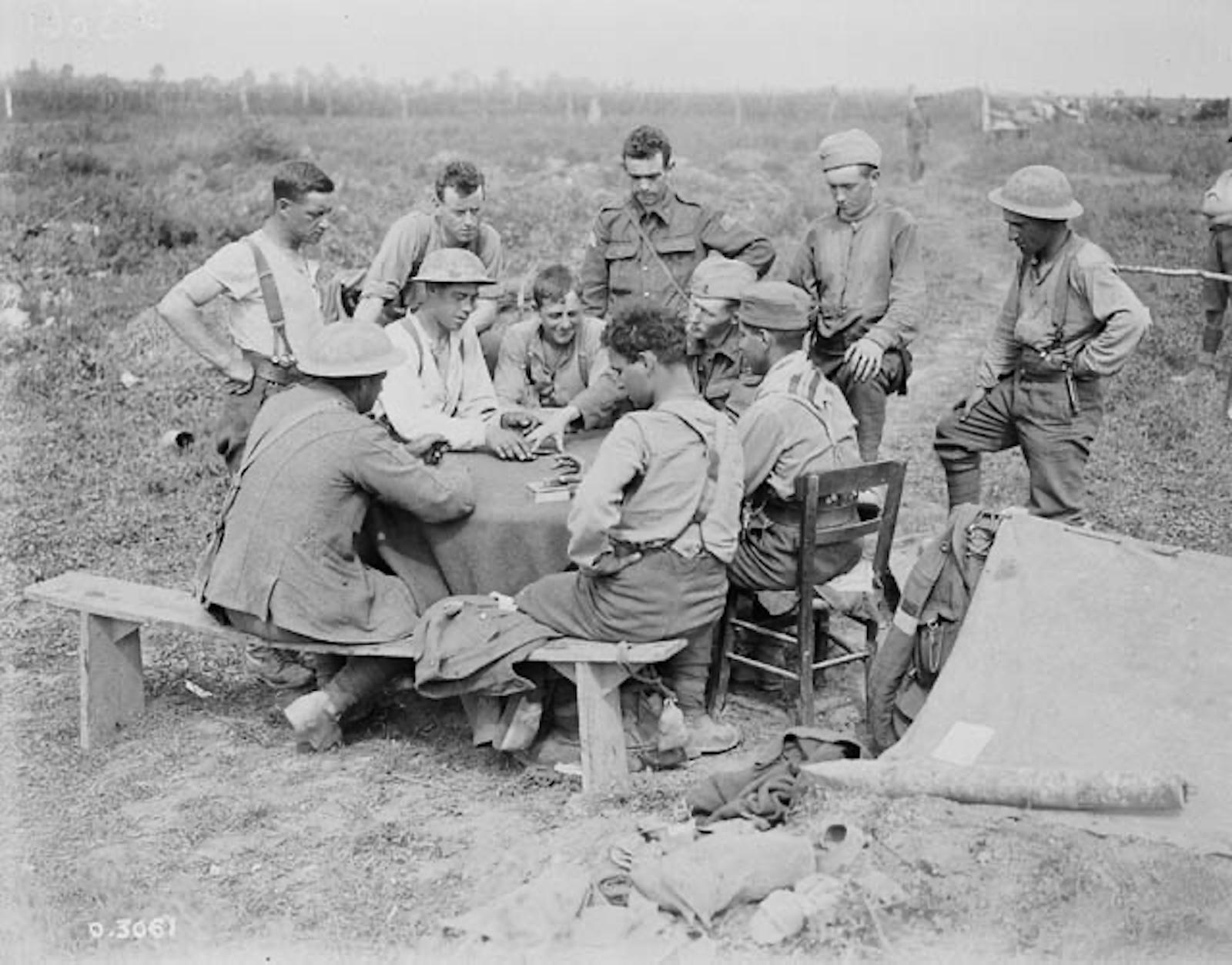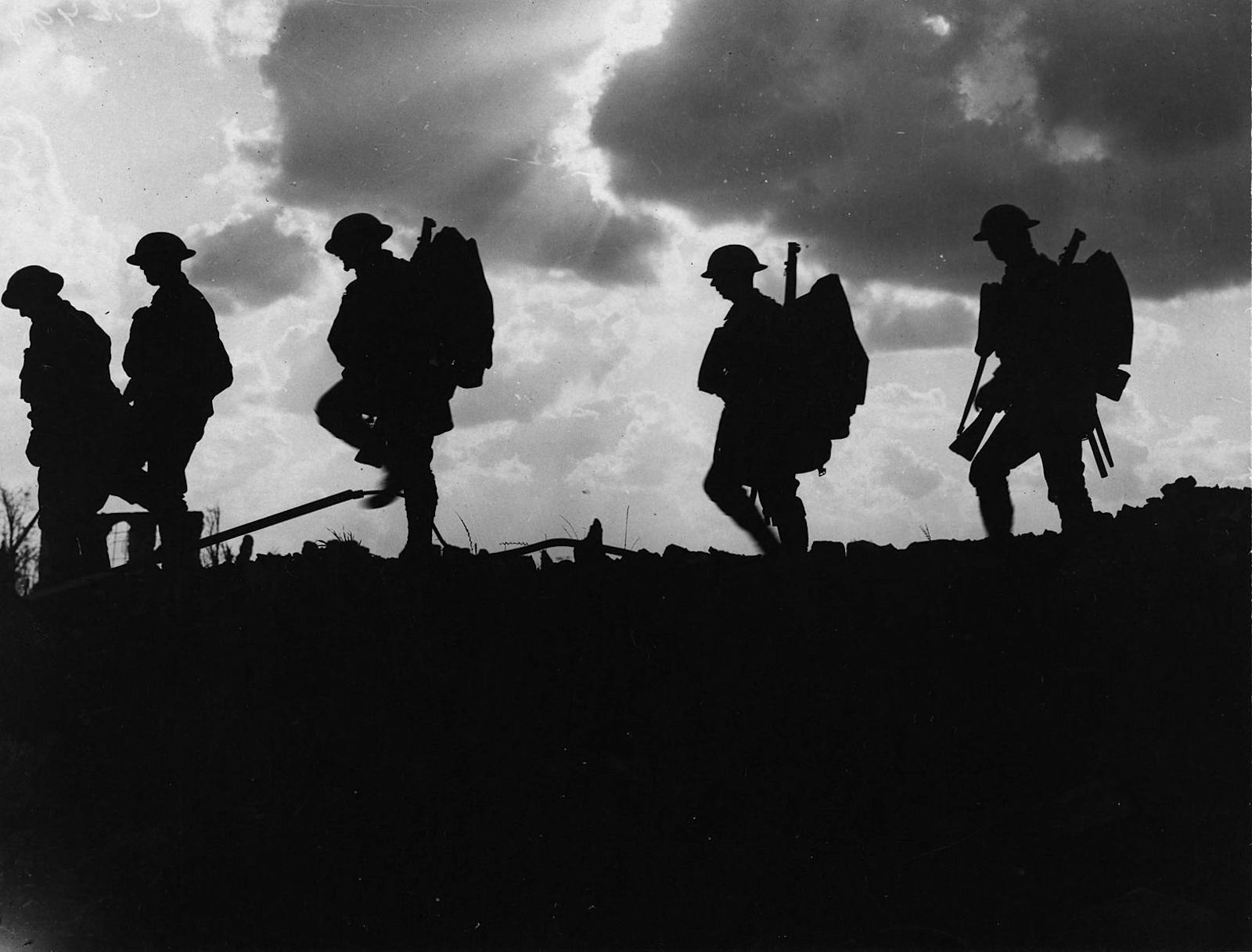Many countries decided to impose very strict regulations on the press in order to limit, or completely prevent, the circulation of negative accounts. Lord Kitchener, the British Secretary of War, made sure that the control on correspondents was so watertight that the photojournalist Jimmy Hare reported that “to so much as make a snapshot without official permission in writing means arrest.” In a similar way, the Italian Army created various photographic teams whose task was to record military operations—only for historical purposes—and an official press office that controlled every aspect of photographic production and distribution.
The images that were created under these restrictions attempted to hide the tragedy of death during wartime. The fallen soldiers were frequently represented under a patriotic light that aimed at celebrating a man’s sacrifice for the good of the nation. Similarly, life in the trenches glorified the camaraderie of soldiers: the time spent between sentry duty, writing letters home, or preparing meals. Yet, these regulations did not take into account the fact that, thanks to new lightweight and portable cameras, officers and soldiers were also taking photographs. British magazines like Illustrated War News and The Daily Mirror encouraged soldiers to send their images and offered prizes for the best ones.
The number of photographs taken during the war is overwhelming, yet the majority of the photographers remain unknown. Those who emerged from anonymity, such as the British Ernest Brooks (1876-1957) and the Canadian William Rider Rider (1889-1979), did produce good but somehow monotonous photographs. Brooks was the only official photographer to cover the Battle of the Somme (1916) and the longest-serving British war photographer. His background as a professional photographer is evident in his work. The images created by Brooks are well composed, technically advanced, and characterized by the use of dramatic silhouette. His most famous shot is arguably Troops Moving at Eventide, Men of a Yorkshire Regiment on the March.


























![DEl Kathryn Barton [Australian b. 1972] the more than human love , 2025 Acrylic on French linen 78 3/4 x 137 3/4 inches 200 x 350 cm Framed dimensions: 79 7/8 x 139 inches 203 x 353 cm](/sites/default/files/styles/image_5_column/public/ab15211bartonthe-more-human-lovelg.jpg?itok=wW_Qrve3)



